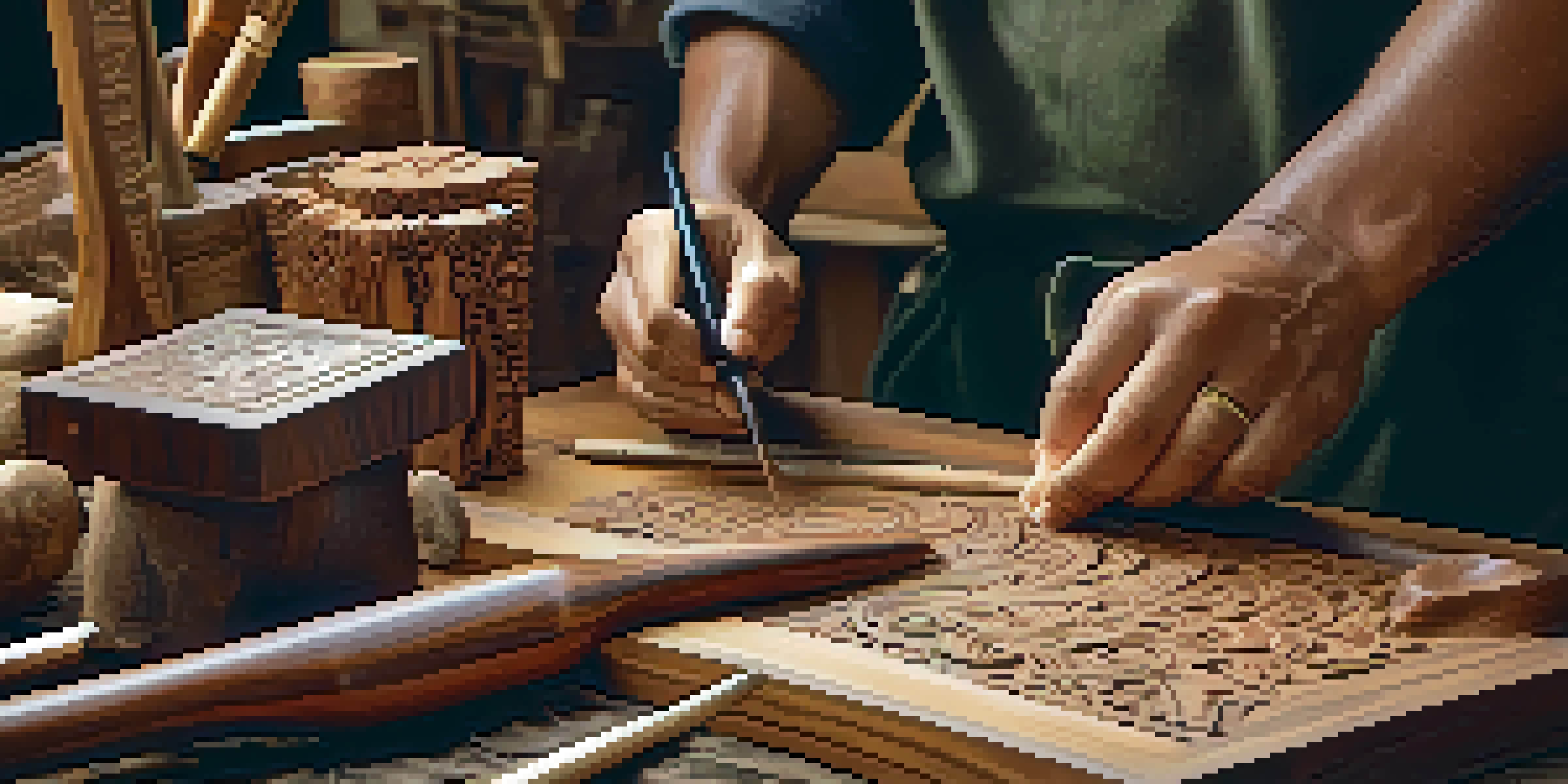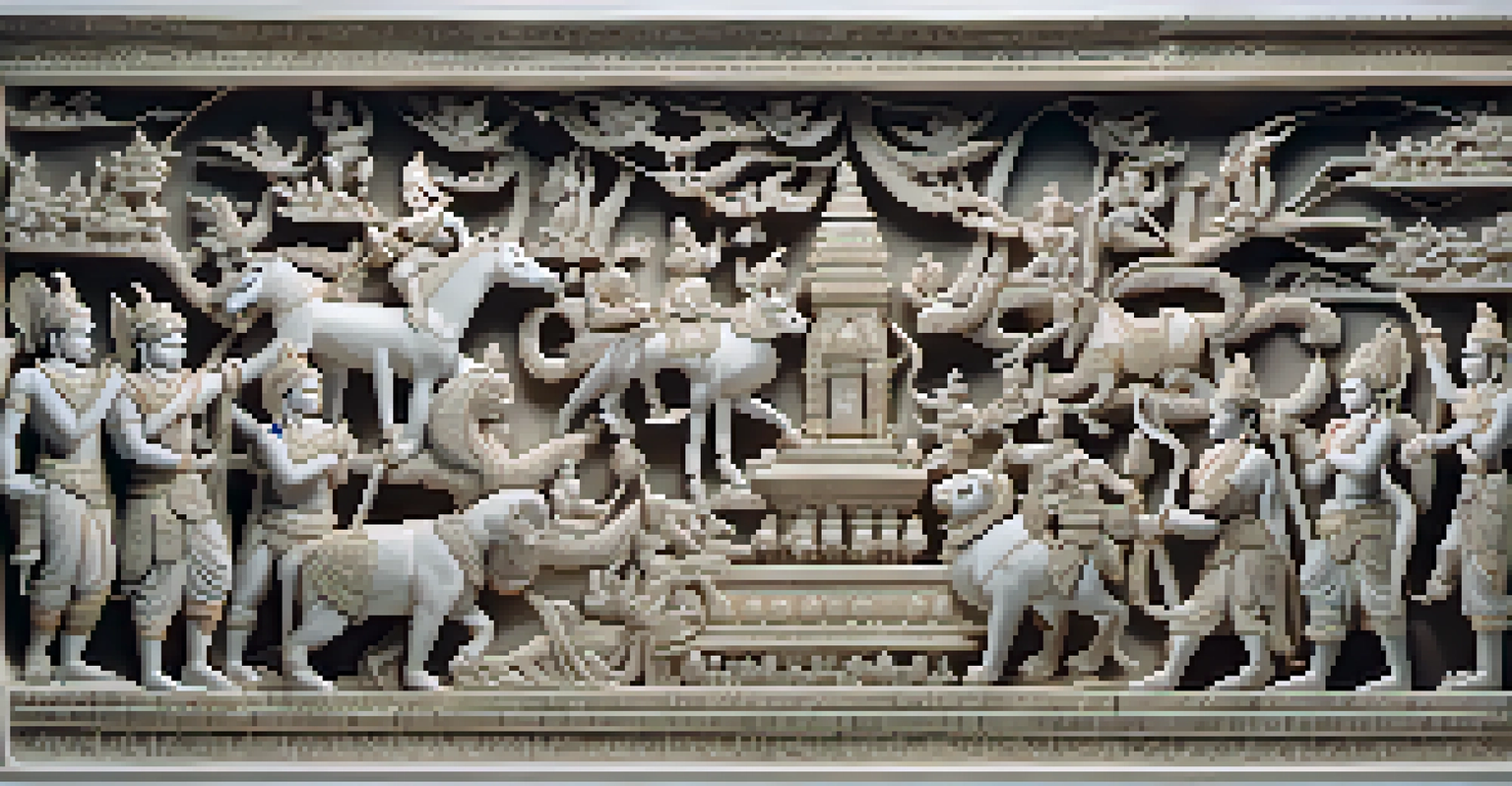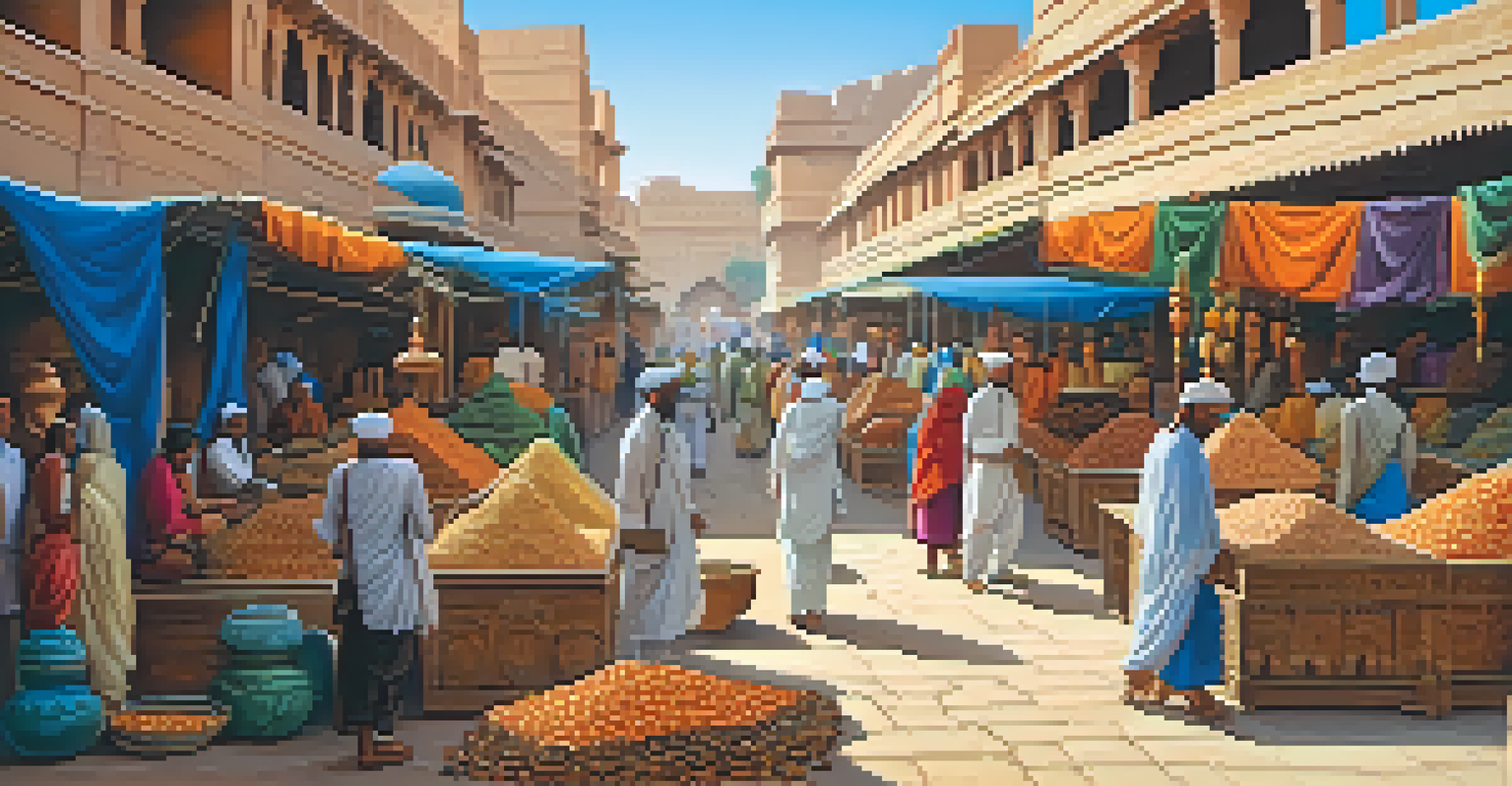Carving Techniques of India: A Cultural and Artistic Journey

The Historical Roots of Indian Carving Techniques
Indian carving techniques boast a rich history that dates back thousands of years. The ancient Indus Valley Civilization showcased intricate designs, setting a precedent for future artisans. As time progressed, various dynasties, including the Mauryas and Guptas, contributed to the evolution of these techniques, blending regional styles with global influences.
Art is the most beautiful of all lies; it is the bridge between reality and the imagination.
These historical roots are essential to understanding how carving has transformed through the ages. Temples, monuments, and palaces were often adorned with carvings that told stories of gods, nature, and everyday life. This rich narrative tradition not only served aesthetic purposes but also helped preserve cultural values across generations.
Today, many of these techniques remain alive, passed down through generations of artisans. The dedication to craftsmanship reflects a deep respect for history, making Indian carving a living testament to its cultural heritage.
Diverse Materials Used in Indian Carving
One of the fascinating aspects of Indian carving is the variety of materials used. From soft woods like teak and rosewood to hard stones like marble and granite, each material offers unique qualities that influence the final artwork. For example, marble, often used in Mughal architecture, allows for intricate detailing and a smooth finish.

Additionally, artisans sometimes incorporate metals like bronze and copper, creating stunning relief carvings that stand out with depth and texture. The choice of material is not merely aesthetic; it often reflects the cultural significance associated with that particular medium. For instance, wood carvings are prevalent in southern India, while stone carvings dominate in the north.
Rich History of Indian Carving
Indian carving techniques have evolved over thousands of years, reflecting a blend of cultural influences and storytelling traditions.
This diversity not only showcases the artistic range but also the geographical variations across India. Each region has its signature styles and materials, contributing to a rich tapestry of artistic expression that is distinctly Indian.
Regional Variations in Carving Styles
India's vast landscape has given rise to numerous regional carving styles, each with its own flair. For instance, the intricate wooden carvings of Kerala display themes from mythology and nature, often featuring elephants and lotus flowers. These designs are not just decorative; they carry deep symbolic meanings that resonate with local beliefs.
Craftsmanship is a kind of performance art; it is a dance between the materials and the artisans who shape them.
In contrast, the stone carvings of Rajasthan often depict scenes from royal life, showcasing elaborate palaces and warriors in action. The boldness and grandeur of these carvings reflect the region's historical significance as a center of royal power and culture. This variation creates a unique identity for each region, making Indian carving a truly diverse art form.
Moreover, this regional diversity fosters a sense of pride among artisans, who strive to preserve their unique styles while adapting to modern influences. As they continue to innovate, these regional variations contribute to the rich narrative of India's cultural heritage.
The Techniques Behind the Craft
Carving techniques in India can vary widely, but some core methods are universally recognized. Hand tools like chisels and mallets are commonly used, allowing artisans to carve with precision and detail. This traditional approach requires years of practice to master, making each piece a true labor of love.
In addition to hand tools, some artisans use techniques like relief carving, where figures are raised above the background. This method adds depth and dimension to the artwork, making it visually captivating. Other techniques include intaglio, where designs are carved into the surface, creating shadows and textures that enhance the final piece.
Diverse Materials and Styles
Artisans use a variety of materials and regional styles, showcasing India's rich geographical and cultural tapestry.
The skill involved in these techniques is often passed down through apprenticeships, where the younger generation learns from seasoned masters. This mentorship ensures that the art of carving remains a living tradition, continuously evolving while honoring its rich history.
Symbolism and Themes in Indian Carving
Symbolism plays a pivotal role in Indian carving, with many designs representing spiritual beliefs and cultural narratives. Common themes include motifs of nature, deities, and geometric patterns, each carrying its own significance. For instance, the lotus symbol often represents purity and beauty, making it a frequent choice in temple carvings.
Furthermore, many carvings serve as visual storytelling, depicting legends from epics like the Ramayana and Mahabharata. These stories not only entertain but also impart moral lessons and cultural values, making the carvings a vital part of India's oral tradition. Each carved figure can evoke a sense of reverence and connection to the divine.
As a result, the symbolism embedded in these artworks reinforces the spiritual and cultural identity of the communities they represent. This deep connection to meaning adds an extra layer of appreciation for both the artisans and those who admire their work.
Modern Influences on Traditional Carving
As with many art forms, traditional Indian carving is not immune to modern influences. Contemporary artists often blend traditional techniques with innovative designs, creating a fusion that resonates with today’s audiences. This evolution can be seen in the incorporation of modern themes and materials, allowing for a broader range of expression.
The accessibility of technology has also changed the landscape of carving. While many artisans still rely on traditional hand tools, some have started to use power tools for efficiency. This shift can lead to quicker production times, but it also raises questions about preserving the authenticity of the craft.
Balancing Tradition and Modernity
Contemporary influences and technology are reshaping Indian carving, yet many artisans strive to preserve their cultural roots.
Despite these changes, many artisans are committed to maintaining their cultural roots. Workshops and exhibitions often celebrate traditional techniques, showcasing the enduring beauty of Indian carving. This balance between tradition and modernity ensures that this art form continues to thrive in a rapidly changing world.
The Future of Indian Carving Techniques
Looking ahead, the future of Indian carving techniques appears promising yet challenging. As globalization brings new influences, artisans must navigate the fine line between innovation and tradition. Many are embracing new technologies while striving to uphold the values and narratives that define their craft.
Education and awareness play crucial roles in ensuring the survival of these techniques. Initiatives that promote craftsmanship and provide platforms for artisans can help foster appreciation for this art form. By engaging communities and encouraging younger generations to participate, the legacy of Indian carving can be preserved.

Ultimately, the future of Indian carving lies in its ability to adapt while remaining rooted in its rich heritage. As artisans continue to create, share, and inspire, they contribute to a vibrant cultural tapestry that celebrates the beauty of diversity and tradition.